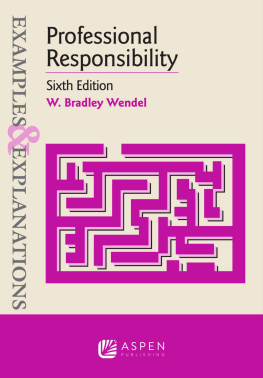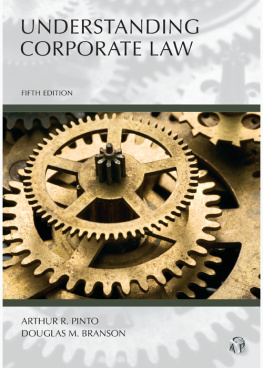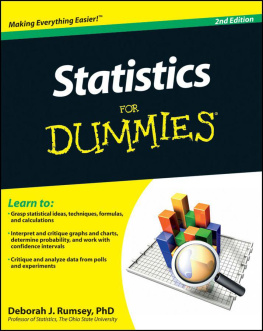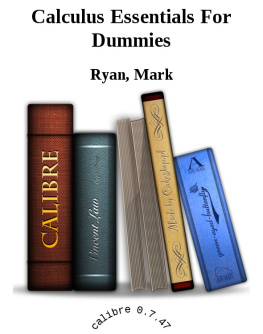
EDITORIAL ADVISORS
Erwin Chemerinsky
Dean and Distinguished Professor of Law
Raymond Pryke Professor of First Amendment Law
University of California, Irvine School of Law
Richard A. Epstein
Laurence A. Tisch Professor of Law
New York University School of Law
Peter and Kirsten Bedford Senior Fellow
The Hoover Institution
Senior Lecturer in Law
The University of Chicago
Ronald J. Gilson
Charles J. Meyers Professor of Law and Business
Stanford University
Marc and Eva Stern Professor of Law and Business
Columbia Law School
James E. Krier
Earl Warren DeLano Professor of Law
The University of Michigan Law School
Richard K. Neumann, Jr.
Professor of Law
Maurice A. Deane School of Law at Hofstra University
Robert H. Sitkoff
John L. Gray Professor of Law
Harvard Law School
David Alan Sklansky
Stanley Morrison Professor of Law, Stanford Law School
Faculty Co-Director, Stanford Criminal Justice Center

Copyright 2016 CCH Incorporated. All Rights Reserved.
Published by Wolters Kluwer in New York.
Wolters Kluwer Legal & Regulatory Solutions U.S. serves customers worldwide with CCH, Aspen Publishers, and Kluwer Law International products. (www.WKLegaledu.com)
No part of this publication may be reproduced or transmitted in any form or by any means, electronic or mechanical, including photocopy, recording, or utilized by any information storage or retrieval system, without written permission from the publisher. For information about permissions or to request permissions online, visit us at www.WKLegaledu.com, or a written request may be faxed to our permissions department at 212-771-0803.
To contact Customer Service, e-mail , call 1-800-234-1660, fax 1-800-901-9075, or mail correspondence to:
Wolters Kluwer
Attn: Order Department
PO Box 990
Frederick, MD 21705
eISBN 978-1-4548-7606-9
Library of Congress Cataloging-in-Publication Data
Names: Wendel, W. Bradley, 1969- author.
Title: Professional responsibility : examples and explanations / W. Bradley Wendel.
Description: Fifth edition. | New York : Wolters Kluwer, [2016] | Includes bibliographical references and index.
Identifiers: LCCN 2015038226| ISBN 9781454868439 | ISBN 1454868430
Subjects: LCSH: Legal ethicsUnited States. | Attorney and clientUnited States.
Classification: LCC KF306.W46 2016 | DDC 174/.30973dc23 LC record available at http://lccn.loc.gov/2015038226
About Wolters Kluwer Legal &
Regulatory Solutions U.S.
Wolters Kluwer Legal & Regulatory Solutions U.S. delivers expert content and solutions in the areas of law, corporate compliance, health compliance, reimbursement, and legal education. Its practical solutions help customers successfully navigate the demands of a changing environment to drive their daily activities, enhance decision quality, and inspire confident outcomes.
Serving customers worldwide, its legal and regulatory solutions portfolio includes products under the Aspen Publishers, CCH Incorporated, Kluwer Law International, ftwilliam.com, and MediRegs names. They are regarded as exceptional and trusted resources for general legal and practice-specific knowledge, compliance and risk management, dynamic workflow solutions, and expert commentary.
For Ben and Hannah
Summary of Contents
Contents
Preface
No matter what area of law you choose to specialize in, I guarantee that you will practice the subject of this course. You may never file a motion for summary judgment, appear at a preliminary hearing or sentencing, perfect a security interest, prepare a will, or draft comments on proposed new regulations; but you will, at some time, think about what you are learning in your Professional Responsibility course. You may have to decide whether you can represent a new client in light of your obligations to an existing client. You certainly will have to keep client confidences, and at some point, you may need to assert a privilege covering certain confidential communications to prevent them from being discovered by others. You may bill clients for your services, in which case you need to know the rules governing attorneys fees, and you may even advertise for business. One way or the other, you will have to know the law of professional responsibility.
One of the major themes of this book is that you cannot understand your duties and responsibilities as a lawyer just by looking at the disciplinary rules, sometimes called ethics codes or rules of ethics. The ABA Model Rules of Professional Conduct, in whatever version they are adopted in your state, are the basis for potential professional discipline by state bar authorities, but this discipline is not the only thing that lawyers must worry about in practice. Your day-to-day actions also will be influenced by the possibility of liability for malpractice to your client, sanctions imposed by a court under its inherent power or rules of procedure, potential loss of entitlement to fees, disqualification from representing a client, and waiver of evidentiary privileges. Not to slight the importance of the disciplinary system, but by the calculations of some scholars, a lawyer is over a thousand times more likely to pay out in excess of $10,000 in a malpractice lawsuit, by way of judgment or settlement, than to be disbarred. Which risk do you think is more likely to demand ones attention? Furthermore, many significant areas of professional responsibility law, such as conflicts of interest and the attorney-client privilege, are driven almost entirely by considerations unrelated to professional discipline, such as disqualification and loss of fees in the case of conflicts, or the desire to protect client communications from disclosure in court in the case of the attorney-client privilege. Thus, it is vitally important to consider the whole field of the law governing lawyersnot just the disciplinary rules.
This does not mean that we will not consider the disciplinary rules carefully. In fact, the Model Rules are central to much of the book. In many cases, however, we will move beyond the state bar disciplinary rules and discuss the relationship with other sources of law. For example, the professional duty of confidentiality, stated in Model Rule 1.6, is often confused with the attorney-client privilege, which is a creature of the law of evidence. By looking at the evidentiary privilege with some care, you can see the distinctions and overlap between these two doctrines. Even if your law school course is limited to study of the Model Rules, the contrast with the attorney-client privilege can sharpen your understanding of the precise boundaries of the duty of confidentiality. It is more likely, however, that your Professional Responsibility course will touch on other areas of law, such as the evidence rules governing privileges; the Sixth Amendment doctrines pertaining to ineffective assistance of counsel, the law of agency, partnership, and corporations as it pertains to conflicts of interest; client identification; fiduciary duties; and the tort and regulatory law of fraud.
Thus, the first goal of this book is to integrate these other sources of law with specific professional responsibility rules so that you can get a complete picture of your duties as a lawyer. Unlike some other textbooks, this book does not draw an artificial distinction between analysis of the disciplinary rules and other law that applies to lawyers representing clients. In some places, the result of this integration may be greater complexity and length of treatment, but I believe it is warranted by the importance of understanding the interaction between the bars own rules and other legal norms that lawyers must take into account. The second goal of the book is to make you aware of the theory and policy reasons underlying the law governing lawyers. Your law school course may be aimed more at ethics (in the philosophical sense of reasoning about right and wrong) than at law. In other words, you may be asked to step back from the law and understand the role of the lawyer in terms of its function in our society, the history of the profession, general rational standards of right and wrong, or the perspective of some other discipline. Although no textbook of reasonable length can do justice to these alternative perspectives on the legal profession, I do hope at least to introduce them and show how they affect the law as it develops.
Next page













